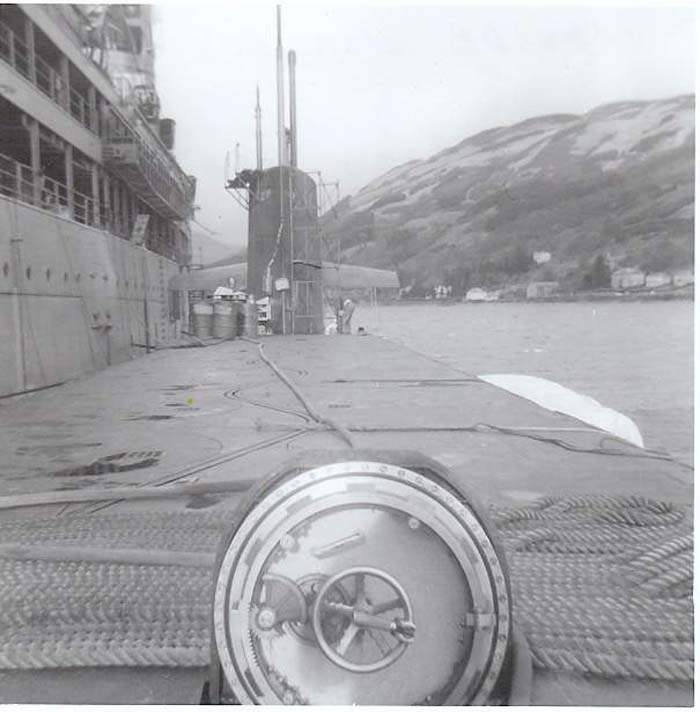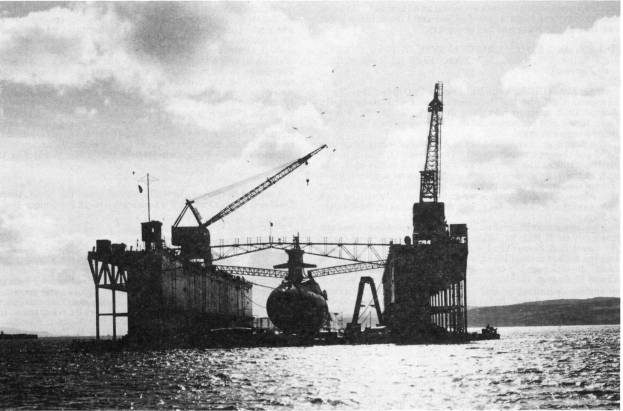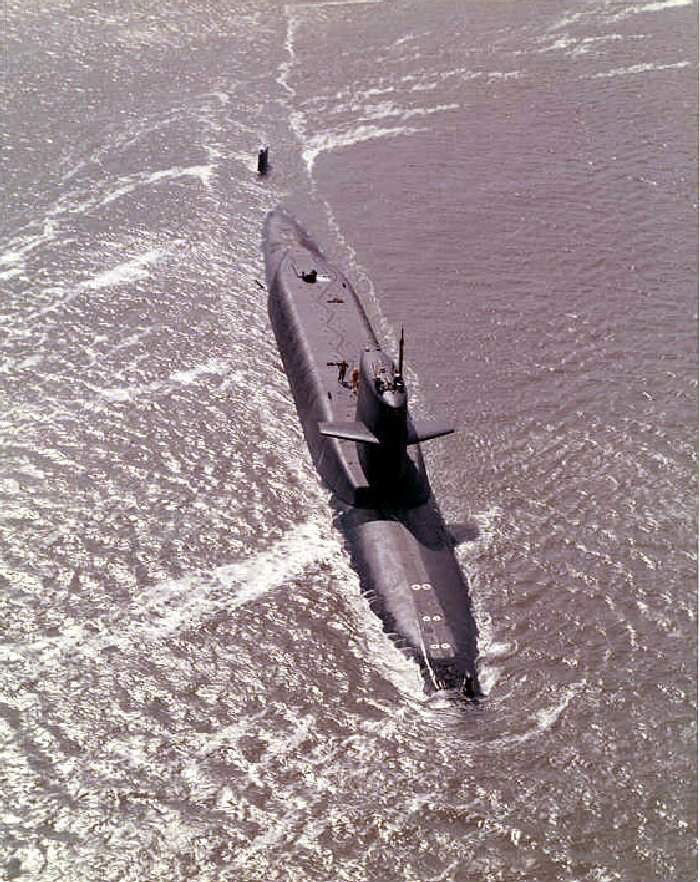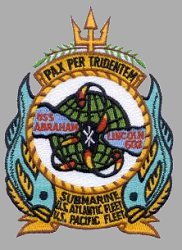USS ABRAHAM LINCOLN (SSBN 602)
I am writing this on July 1, 2019 which is the anniversary of the beginning of the Battle of Gettysburg in 1863. It’s interesting that the next four days will be dedicated to members of the 41 for Freedom Family who all had a direct connection to the Civil War and those days that will forever be remembered as the turning point for the Civil War. Abraham Lincoln, who was dedicated to the preservation of the Union. Stonewall Jackson who had died in May of 1863 was obviously not present at Gettysburg but his absence was felt by Lee. Robert E. Lee who calculated the most in this single venture and saw his fortunes reversed by that gamble and of course General Grant who was not present but was winning decisively in the western campaign at the same time which ensured the path the Union would follow for the rest of the war.
But first, we have the USS Abraham Lincoln. Surprisingly, she was the first US warship to bear that name.
The first time I saw the Abraham Lincoln, she was moored next to the USS Proteus in Guam. To someone who had just seen his first SSBN in person when he reported on board the George Washington, I couldn’t tell the difference. Lincoln was the last of the 598 class boats and she had just come to Guam not long before I did.
I remember standing topside watch and learning about some of the customs of the boats. One of those customs was to announce the arrival and departure of the skipper. When the captain came on board for the first time that day, the boat’s name was announced with the word “Arriving”. Similarly if he was leaving, it was the boat’s name and the word “Departing”. If he was coming back from the tender or shore, he was “Returning”.
If a boat was tied up outboard and the skipper of that boat needed to cross over, you had to say “such and such (boat’s name), crossing”.
So one of my favorite stories from those days was being the topside watch when the skippers were returning form a Squadron meeting and getting the chance to make the announcement. In my case it was “George Washington, Returning, Abraham Lincoln, crossing”.
The Lincoln was probably a good boat. But in 1974-75, my memory was that she had her share of mechanical problems. Since she was the Washington’s relief boat, we had to extend a few times on station as we waited for her to be ready to come and take the watch. Plus there was a pretty big typhoon that closed Apra Harbor and made patrol 43 a lot longer than any of us was prepared for. Let’s just say cigarettes were in pretty high demand by the time we were told we could finally come home.
But the name Lincoln is certainly one of the most famous of all the 41 for Freedom names. Admiral Rickover wrote this in his book “Eminent Americans”
USS ABRAHAM LINCOLN (SSBN 602)
“NAMED FOR Abraham Lincoln (1809—65), 16th President of the United States and, next to Washington, best known and most cherished of all who have held that lofty position. More has been written about Lincoln than about any other President, yet we cannot be certain of having taken the full measure of the man. He is hard to appraise objectively; the affection he inspires gets in our way. We have trouble disentangling him from the legend built by popular adulation. The thought of what he might have achieved had he not been struck down by an assassin’s bullet intrudes when we attempt to evaluate what he actually accomplished. Walt Whitman perhaps came closest to the truth in his brief elegy to the slain President, calling him “the man, gentle, plain, just and resolute, under whose cautious hand . . . was saved the Union of these States.” The essence of Lincoln is encompassed in these few words—the man he was, the aim he sought and attained, and the manner in which he pursued his objective.
He was the most American of our Presidents; no other country could have produced him or would, in Lincoln’s day, have elevated a man of such lowly origins to the highest office in the land. To use his own words, he had been born “in the most humble walk(s) of life,” of parents who were poor and came from “undistinguished families,” his birthplace a small back woods cabin on what was known as the “Sinking Spring Farm” in Hardin (now Larue) County, Ky.”
To restore the Federal Republic was Lincoln’s single aim as President; everything he did served this objective. He found it rent .in two when he took the oath of office, the sundered parts angrily disputing territory won in a century of common effort. When he died 4 years later, the parts had been rejoined, the Union made “indestructible,” its paramountcy so firmly established that it was never again questioned by any State or region. This achievement ranks with the winning of independence and the founding of the Union in which Washington took the leading part. Popular judgment is sound when it pronounces the “Savior of the Union” and the “Father of his Country” the two great American Presidents; for each, at his moment in history, was indispensable to the very existence of this Nation.”
Boat Statistics
Class and type: George Washington-class submarine
Displacement: 5,400 tons light
5,959–6,019 tons surfaced
6,709–6,888 approx. tons submerged
Length: 381.6 ft (116.3 m)
Beam: 33 ft (10 m)
Draft: 29 ft (8.8 m)
Propulsion: 1 S5W PWR
2 geared turbines at 15,000 shp (11,000 kW)
1 Screw
Speed: 20 knots (37 km/h) surfaced
+25 knots (46 km/h) submerged
Range: unlimited except by food supplies
Test depth: 700 ft (210 m)
Complement: Two crews (Blue/Gold) each consisting of 12 officers and 100 enlisted
Armament: 16 Polaris A1/A3 missiles
6 × 21 in (533 mm) torpedo tubes
The Boat History:
Abraham Lincoln (SSBN-602) was laid down on 1 November 1958 by the Portsmouth (N.H.) Naval Shipyard; launched on 14 May 1960; sponsored by Miss Mary Lincoln Beckwith, the great granddaughter of President Lincoln; and commissioned on 11 March 1961, Comdr. Leonard Erb (Blue Crew) and Comdr. Donald M. Miller (Gold Crew) in command.
The fleet ballistic missile submarine got underway on 20 March for shakedown and weapons testing at Cape Canaveral, Fla., and returned to Portsmouth on 1 June for post-shakedown availability. She left Portsmouth on 17 July to return briefly to Cape Canaveral for further testing and then proceeded to Charleston, S.C., for a final loadout. Abraham Lincoln subsequently got underway on 28 August as a unit of Submarine Squadron 14, Submarine Force, Atlantic Fleet. She arrived at Holy Loch, Scotland, in October. The submarine underwent a refit alongside Proteins (AS-19) during November and, upon its completion, commenced her first deterrent patrol.
Abraham Lincoln operated out of Holy Loch for the next four years. She alternated periods of upkeep at Holy Loch alongside Proteus or Hunley (AS-31) with deterrent patrols from that port. A highlight of this period occurred during the Cuban crisis of October 1962. The submarine was in the middle of a scheduled four-week upkeep period when she received orders to deploy. Abraham Lincoln departed in short order and successfully carried out a 65-day patrol. On 13 October 1965, Abraham Lincoln arrived at Groton, Conn., and entered the Electric Boat Co. yard located there on 25 October to begin an overhaul and refueling.
This work was completed on 3 June 1967 and the submarine returned to her base at Holy Loch and resumed her schedule of deterrent patrols. She continued the pattern of alternating patrols with periods of upkeep alongside either Simon Lake (AS-33) or Canopus (AS-34) through 1972. In early March of that year, Abraham Lincoln sailed for the United States and arrived at the Submarine Base, New London, Conn., on 25 April. She held two dependents’ cruises before getting underway on 19 May for the west coast to join the Pacific Fleet. Abraham Lincoln made a brief visit to Ft. Lauderdale, Fla., transited the Panama Canal on 1 June, sailed to Bangor, Wash., to offload her missiles, then pushed on to San Francisco, Calif. On 25 June, Abraham Lincoln entered the Mare Island Naval Shipyard, Vallejo, Calif., to commence overhaul and refueling.
The extensive overhaul was completed in December 1973. After shakedown in the areas around Puget Sound and San Diego, Calif., Abraham Lincoln transited the Panama Canal on 1 June 1974. She held tests and local operations at Cape Kennedy, Fla., and Charleston, S.C. The submarine retransited the canal on 26 July and sailed for her new home port, Pearl Harbor, Hawaii, where she arrived on 10 September. The submarine continued on to her advanced base at Guam, arriving on 18 October. The submarine then began deterrent patrols from that island in the Marianas. During the next four years, the warship carried out deterrent patrols from Guam. She also participated in numerous tests and exercises. In 1977, Abraham Lincoln became the first ballistic missile submarine to have conducted 50 strategic deterrent patrols.
Abraham Lincoln completed her last patrol in October 1979 and arrived at Bangor, Wash., on 30 October to commence offloading her missiles before beginning inactivation overhaul. Preparations for her retirement continued through 1980 and into 1981. On 28 February 1981, Abraham Lincoln was decommissioned at the Puget Sound Naval Shipyard. Her name was struck from the Navy list on 1 December 1982.
The next boat that would be built after Lincoln would take advantage of the lessons learned form the first five. But each of the 41 for Freedom Boats ensured another generation could come along after their work was done.









I served on the gold crew from 1974 to 1976. FTB who worked in mcc.
When I went aboard USS ABRAHAM LINCOLN (CVN-72) I was proud to see the Bronze placard from USS ABRAHAM LINCOLN (SSBN 602) on the “island”
Good morning CDR.
FTCM(SS) John Ritter
Staff CMC, COMSUBGRU-9, 1996-2000
1967-1968 Blue Crew
ETN2(SS) Gold crew 1974 – 1976.
Blue crew FTB (5 patrols from Holy Loch) Dec ‘69 to overhaul, then Gold crew (2 patrols from Guam) till March ‘75.
Blue crew 1962-1963, medical officer
well done..
Ronald Fields, US ODAX SS484
Excellent coverage from beginning to end. The photo of the Lincoln in dry dock (USS Los Alamos) was in the late 60’s.
John Ritter, FTG3(SS), USS Abraham Lincoln SSBN-602 Blue crew, 1975-1976. Made my second and third patrol on the Lincoln, then transferred to the Sam Houston to fill an FTG slot.
I was on the 598 when the Lincoln was sailing out of Guam in the early 1970’s. Her being stuck in Apra Harbor contributed to us having a patrol that lasted over 100 days. We found out how bad the emergency food really was
Mac
LOL
1968-1972 ,Blue Crew 9 patrols out of Holy Loch , FTG filling FTB billet.
MT, Gold crew, 1975-1979, 8 patrols including that deep dive…